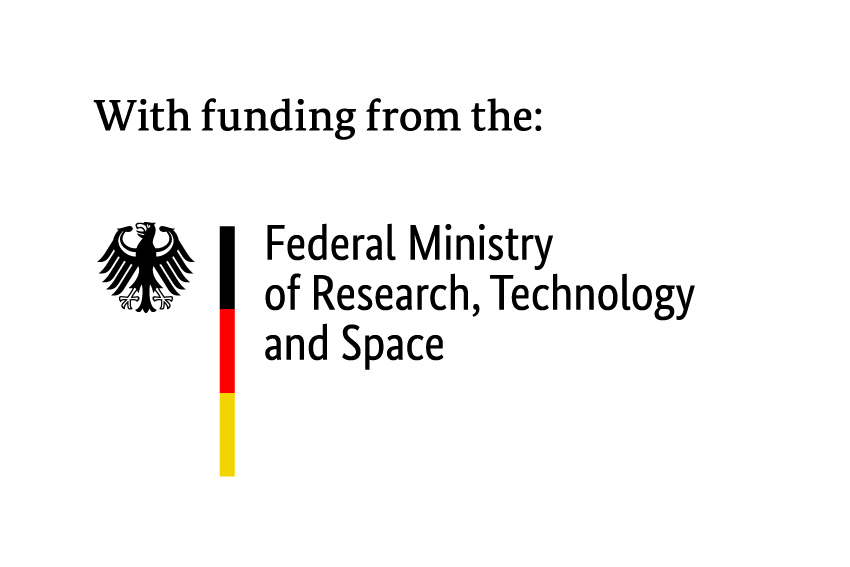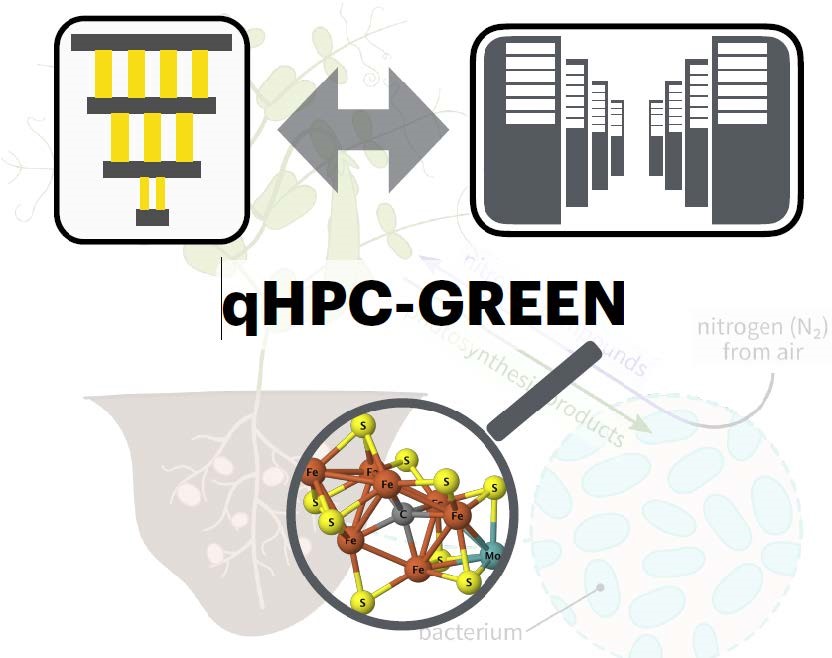qHPC-GREEN
Title: Quantum-enhanced high-performance computing for the green energy transition – qHPC-GREEN
Project duration: 01.01.2025 – 31.12.2029
Research Area: Applied AI and Big Data, Physics and Chemistry

The BMBF-funded qHPC-GREEN project aims to contribute to the green energy transition by developing advanced computational methods to better understand and design efficient, sustainable technologies. The project focuses on improving how we model complex biochemical processes, such as nitrogen fixation—a key step in producing fertilizers—using innovative algorithms that combine classical high-performance computing (HPC) with emerging quantum computing (QC). By simulating these processes more accurately and efficiently than is possible with traditional methods, the project supports the development of cleaner, energy-saving alternatives to current industrial practices. The insights gained can help reduce greenhouse gas emissions and have broader applications in areas like materials science and renewable energy, contributing to a more sustainable future.

Aims
The project aims to develop hybrid HPC+QC algorithms for accurate simulations of strongly correlated biochemical systems, focusing on nitrogenase-based nitrogen fixation for green ammonia production. By extending the TC-VarQITE method, the project seeks to reduce quantum resource requirements, mitigate noise on noisy intermediate-scale quantum devices, and enable efficient catalyst design. The goal is to advance sustainable energy technologies and help position Germany as a leader in quantum-enabled green chemistry.
Problem
The project’s central problem is accurately modeling complex biochemical processes, like nitrogen fixation, which are crucial for green energy technologies. Conventional computational methods struggle to describe the strongly correlated quantum systems at the heart of these processes, limiting progress in catalyst design for sustainable ammonia production. The project addresses this by developing hybrid HPC+QC algorithms to overcome these limitations and enable more energy-efficient solutions.
Technology
The qHPC-GREEN project uses a hybrid computational approach that integrates High-Performance Computing (HPC) with Quantum Computing (QC) to model complex biochemical processes. The core technology is the Transcorrelated Variational Quantum Imaginary Time Evolution method, which efficiently simulates strongly correlated quantum systems. This approach leverages noise-resilient quantum algorithms, error mitigation techniques, and quantum embedding methods to accurately model enzymatic nitrogen fixation. The project utilizes state-of-the-art quantum software frameworks like Qiskit and interfaces with classical quantum chemistry tools such as OpenMolcas. Access to cutting-edge quantum hardware from IBM and Helmholtz research facilities ensures practical testing and optimization, with potential applications in materials discovery, green energy, and beyond.
Outlook
The qHPC-GREEN project is expected to deliver new quantum-classical algorithms that improve the accuracy and efficiency of simulations for green energy applications, such as sustainable ammonia production. These methods will provide deeper insights into biochemical catalysis, supporting the development of energy-efficient fertilizers and cleaner industrial processes. Beyond nitrogen fixation, the project’s hybrid HPC+QC framework can be extended to other fields, including hydrogen production, carbon capture, and materials discovery. In the long term, the developed techniques will contribute to the growing ecosystem of quantum computing applications, positioning Germany at the forefront of quantum-enabled research for sustainable technologies. Future research will focus on refining these algorithms, exploring dynamic quantum systems, and applying the methodology to other complex environmental and energy-related challenges.
Team
Lead

Dr. Werner Dobrautz
Partner of DRESDEN-concept
Helmholtz-Zentrum Dresden-Rossendorf (HZDR)
Partners


